There was an article a few weeks ago on Deadspin – titled “If You Give A Mouse A Cookie, You’re F*****: 10 Tips For Avoiding Terrible Children’s Books” by Drew Magary – that I thought was fantastic because, beneath Magary’s good-natured vitriol and snark, he gave some really perceptive, insightful advice about trying to steer your kids away from lowest common denominator reading material. (His recommended reading list at the end of the article is particularly good.)
While I couldn’t stop nodding at tips like “Avoid repetitive books”, “Do not buy fancy pop-up books,” or “NEVER buy a DK reader book”, I was surprised to actually find myself pausing when I got to Magary’s last tip – “NEVER buy a children’s book written by a celebrity.” (He then adds: “You already knew this. But just in case you were walking by I Already Know I Love You and thought, ‘Hey, maybe that one won’t suck,’ SHUT UP. You should know better.”)
I’d admit, on the surface, that is a fairly good tip. There are a ridiculous number of celebrities who have dipped their toes into the children’s literature arena – Madonna, Bill Cosby, Katie Couric, Billy Crystal, Ricky Gervais, Joy Behar, Gloria Estefan, Jeff Foxworthy, Jay Leno, Jerry Seinfeld, Terrell Owens, LeAnn Rimes, Brooke Shields, Maria Shriver, John Travolta, George Foreman, Jimmy Buffett, and Glenn Beck, to only name a small few. (The Atlantic published an intriguing article last year called “Dr. Seuss vs. Madonna: Can Celebrities Write Good Children’s Books?“) While, full disclosure, I haven’t read all of those particular celebrities’ children’s books, I’ve read enough of them to agree with the broad generalization that most celebrities need to realize that just because they CAN write a kids’ book, it doesn’t mean that they SHOULD.
However, the key phrase in that generalization is “MOST celebrities” because, again, if I’m being honest and I HATE to admit this, I DO know some wonderful kids’ books that have been written by celebrities. And, while, yes, MOST celebrities do write underwhelming, self-indulgent, half-assed kids’ books, there are a few legitimately famous people who have written some really strong, savvy children’s titles that I’m proud to have in our home library. So, to add a quick addendum to the whole “avoid celebrity kids’ books” rule, here are my picks for four celebrity children’s book authors who are actually worth a damn.
1. Michael Ian Black
I’m actually surprised that more comedians don’t write children’s books. A strong sense of humor and a skewed worldview seem to be two qualities that both kids’ authors and comedians would share in spades. However, I just haven’t encountered many children’s titles authored by famous comedians and the few I have (I’m thinking of Jay Leno and Jerry Seinfeld‘s books) seemed disjointed, overwrought, and weirdly reliant on the reader having a working knowledge of the comedian’s on-stage persona, which, c’mon, is an odd expectation for the 7 and under crowd. That being said, there are a few professional funny people who have been able to translate their humor for young readers and, case in point, I think Michael Ian Black, in particular, has done a first-class job in really proving that he’s a skilled and shrewd author for children.
For those unfamiliar, Michael Ian Black is a very funny comic actor and writer whom you know from MTV’s The State, NBC’s Ed, VH1’s “I Love the Decades” series, Wet Hot American Summer, and the Comedy Central series Stella and Michael & Michael Have Issues. He’s also gotten into publishing as of late, releasing a recent essay collection and memoir, and, most importantly to me, authoring some very, very funny picture books. What I really respect about Black’s kids’ books is that he didn’t just take his established comedic persona and try to graft it onto 32-pages of kid-appropriate material. (That’d be like Louis CK trying to do a 10-minute, G-rated set at a Chuck E. Cheese.) Instead, Black took his twisted comedic perspective and used it to create some really fun, silly, and engaging story scenarios that are perfectly suited for a kid’s sensibilities.
In The Purple Kangaroo, Black offers a hysterical riff on the old “don’t think of pink elephants” scenario, in which a very animated monkey talks directly to his readers, promising to read their minds. The monkey then offers an over-the-top description of a crazy purple kangaroo – complete with hula-hoops, roller skates, and more – ends with the declaration that, if you weren’t thinking of a purple kangaroo before, “You’re thinking of one now!” (My daughter reacted to this final punchline like a college student watching the end of The Usual Suspects for the first time. She was delightfully floored.) He also authored Chicken Cheeks, a great picture book about a bear stacking up a bunch of animals to reach some honey – and the majority of the text is just short, extremely funny ways to describe the rear-ends of animals. As the animal tower grows and each creature is forced to deal with the posterior of the animal above them, Black keeps dropping brief phrases like “duck tail,” “moose caboose,” “chicken cheeks,” and “polar bear derriere”, which… it’s a book about finding creative ways to name animal butts – it’s like The Wire for a four-year-old.
Black just seems to understand how children appreciate absurdist humor. If he’s going to write a book about animal butts, he’s going to write a really crazy, clever, and fun book about animal butts. In his third book, A Pig Parade Is a Terrible Idea, he takes something that is fundamental and familiar in children’s books – animals acting like humans – and gets into a very funny discussion of why that concept would just be a disaster waiting to happen in reality (for example, “the only floats pigs care about are root beer floats”). And Black gets extra points for picking such fantastic collaborators to work with. Some celebrity kids’ books look like they were illustrated by Microsoft clip art, but Black has chosen to work with talented, acclaimed artists like Peter Brown (Children Make Terrible Pets, The Curious Garden), Kevin Hawkes (Library Lion, Weslandia), and Debbie Ohi, who’s illustrating his new book, I’m Bored, which comes out later this year. Black isn’t just writing children books to create cute gift items for parents who are into his stand-up act. He’s writing kids’ books FOR KIDS and he’s working with some of the best people in the children’s lit industry to bring those books to life. He definitely deserves to be an exception to the “no celebrity authors” rule.
2. Julianne Moore
This one came as a big surprise to me. It’s just not fair that a gorgeous Oscar-nominated actress, who has also proven that she’s funny as hell on shows like 30 Rock, can write lovely and perceptive kids’ books too. (Don’t you have enough, Ms. Moore?!) But I have no problem admitting that Julianne Moore‘s Freckleface Strawberry books are completely charming and wonderful for a whole host of reasons.
We discovered Freckleface Strawberry thanks to Save the Children’s 2012 Valentine’s Day cards, a series of valentines, illustrated by big-name kids’ book creators, that were sold to help raise money to fight children’s poverty. My daughter was SO excited to have these cards to pass out for her first Valentine’s Day in kindergarten and she loved that she was familiar with almost all of the illustrators, a killer group including Mo Willems, Ian Falconer, Brian Selznick, and Kevin Henkes. BUT there was one valentine that we weren’t familiar with – a really cool picture of a cute, freckled girl and her friend that was illustrated by someone named LeUyen Pham. A few weeks after Valentine’s Day, we were at a bookstore and my daughter excitedly declared, “Look, Dad! It’s the people from my valentine! Can we read this?” And that was our introduction to Freckleface Strawberry.
We’ve only read two of Moore‘s three books so far – Freckleface Strawberry and Freckleface Strawberry: Best Friends Forever (haven’t gotten to Freckleface Strawberry and the Dodgeball Bully yet) – but they’ve quickly become family favorites. Moore’s writing style reminds me of the great Florence Parry Heide, in that, like Heide, Moore is able to write in very simple, clever, and clear prose in a way that sounds just so perfectly kid-like that it always feels like the book is being narrated straight out of a child’s subconscious. The characters in the Freckleface books just seem alive and multifaceted – no one feels like a cliché or a stock character. The first book, Freckleface Strawberry, is all about how a girl named Helen, a girl with a shock of red hair and a ton of freckles, deals with her anxieties about looking different than the rest of her classmates. Her freckles are a big source of concern for Helen, particularly after she’s given the nickname “Freckleface Strawberry,” but she soon comes to revel in her freckled self and finds ways to appreciate her individuality.
In Freckleface Strawberry: Best Friends Forever, Freckleface and her best friend Windy Pants Patrick (who has an even better nickname) find themselves draw apart by playground gender politics – simply put, the boys ask Patrick why he’s always hanging out with a girl and the girls ask Freckleface why she’d want to hang out with a boy. I particularly love Best Friends Forever because, with a kid in her first year of kindergarten, I’m seeing our daughter living through some very similar scenarios – she was recently the only girl invited to a Star Wars-themed birthday party – and Moore really captures the ways that children can get caught up in worrying about how other kids perceive the concept of “being different”.
Ultimately, the Freckleface Strawberry books are about children learning to embrace their unique qualities and celebrating their differences as strengths, and what I really like about Moore as an author is that she’s able to pull off stories like that without resorting to schmaltz, drama, or heavy moralizing. There are brief moments of thoughtfulness and angst in Freckleface Strawberry, but they’re handled in such a subtle fashion that Moore is able to convey a ton of emotion in small understated ways. And, while I was really impressed with Moore’s smart command of story and humor, it has to be said that illustrator LeUyen Pham does more than her share of heavy lifting in the Freckleface books. Frankly, Pham is my favorite new illustrator I’ve encountered in a long while – her deft animated style does an amazing job of bringing emotion to her characters and reminds me, in a very positive way, of the work Tony Fucile did on the Geisel Award-winning Bink & Gollie.
So, to sum up, life’s not fair. Pretty, award-winning actresses can also write whimsical, insightful children’s books too. Ah well. But Julianne Moore‘s Freckleface Strawberry is such a great literary creation that it’s kind of hard to hold it against her.
3. Jamie Lee Curtis
I’m just going to put this out there – even though I am an enormous fan of Jamie Lee Curtis, particularly her work in movies like Trading Places, A Fish Called Wanda, and True Lies – I didn’t really think I was going to like her children’s books. Curtis got on my radar very early once I started my “building a library” project because, to be frank, she’s probably the best known (and best-selling) celebrity children’s author writing today. Her books are baby shower staples, they’re some of the few kids’ titles you can find at big, non-bookstore outlets like Target… they’re everywhere. And, on the surface, Curtis’ titles like I’m Gonna Like Me: Letting Off a Little Self Esteem and Is There Really a Human Race just seemed way too earnest and corny to break through my cynical, anti-establishment exterior. I lumped Curtis’ books in with all the other Guess How Much I Love You gift books out there and dismissed them completely.
And then, inevitably, we got several of her books at our baby shower and, after begrudgingly reading a few to our young daughter, I quickly realized why Curtis‘ books are seemingly everywhere nowadays.
It’s because they’re good. They’re really, really good.
Yes, Curtis wears her heart on her sleeve. SO WHAT? Is it so wrong to create a snark-free environment for kids? Is it so wrong that Curtis wants to actually and openly address emotions like parental and familial love without resorting to fart jokes and sarcasm? The answer, of course, is NO, and, in her tremendous partnership with illustrator Laura Cornell, Curtis has created a series of very astute and entertaining picture books that do a marvelous job of helping kids grasp some extremely abstract concepts. Fair warning – we haven’t read all of Curtis’ books, but thanks to her titles like Is There Really a Human Race and Today I Feel Silly: And Other Moods That Make My Day, I’ve had some fantastic discussions with my daughter about emotions, humanity, cultural differences, growing up, being angry – a whole host of big, big topics that Curtis and Cornell make accessible and explainable for young minds.
Our particular favorite of Curtis‘ books is Big Words for Little People, a book that, on more than one occasion, my daughter has hugged it to her chest and declared, “This is my very favorite book EVER.” (Granted, she does that with a different book every few weeks, but it’s still a big honor and Big Words has worked its way into that rotation more than once.) Big Words does a really fantastic job of explaining to kids how big emotions and concepts can be expressed through vocabulary, which is a really interesting way to get children thinking about language. My daughter was determined to learn many of the big words Curtis describes throughout the book, and there’s one page, in particular – where the cast of characters act out words like “stupendous”, “superb”, “kingly,” “gracefully”, etc. – that I will always adore because it was one of the first pages, in any book, where my daughter memorized every single word. Heck, we’ve read Big Words enough that I’ve almost got it memorized myself and Laura Cornell‘s illustrations are so intricate and deep that it seems like we find new details every time we read it.
So, are Jamie Lee Curtis‘ books sarcastic, meta, or too clever for their own good? Are they dripping with hipster klout and references that your kid won’t get until they’re teenagers? No. And that’s a good thing. Because, while I’m a big fan of meta and clever myself, there is something to be said about occasionally leaving cynicism at the playroom door and being able to talk to your kids about concepts like love, respect, and family without worrying that you’re not being cool enough. Yes, Curtis‘ prose is earnest and sometimes falls on the wrong side of the cheesy line, but, a large majority of the time, her books do a very admirable job of helping children digest and express all of the tricky abstract emotions that come with being a kid. And, as a parent, I find that way more impressive than farting dogs or pop culture references.
4. Weird Al Yankovic
Speaking of pop culture references… let’s just get this out of the way, as a kid, I was OBSESSED with Weird Al. Totally obsessed. Thanks to him, I don’t think I bought a non-parody music album until I was in high school and I fondly remember organizing my friends and family to go see a preview screening of UHF, which I saw in the theatres 3 or 4 times. Weird Al was a huge part of my childhood, so, full disclosure, he ranks pretty high on my nostalgia meter.
That being said, when Al Yankovic released his first kids’ book in early 2011, When I Grow Up, I actively avoided it. Why? Because I was convinced that either a). I’d be unable to judge it objectively without wearing rose-colored glasses or b). it wouldn’t be good and I’d hate it. So, a few months ago, when my daughter came up to me at our local library, handed me a copy of When I Grow Up, and asked me to read it to her, I was definitely apprehensive. I just didn’t know what to expect.
Fortunately, When I Grow Up turned out to be a really pleasant surprise. There are hundreds, perhaps thousands, of books about show and tell and/or kids discussing what they want to be when they grow up, so, on the surface, the premise of Yankovic‘s picture book wasn’t really anything to write home about. However, Yankovic was able to turn his take on the subject into a truly unique experience by utilizing two of the most dominant traits of his songwriting – his absurd sense of humor and his skill with lyrical meter. Simply put, When I Grow Up is a tremendous read-aloud book. I know some parents don’t like books that rhyme, but Yankovic’s text is so expertly crafted and has such a fun, easy-to-lock-onto rhythm that I found it a joy to read aloud. A lot of children’s authors don’t understand that rhyming isn’t everything – that poetry not only needs rhyme, but it also needs rhythm and meter – and I’ve encountered way, way too many awkwardly phrased “rhyming books” where you can’t go two pages without tripping over a clumsy passage.
Fortunately, the phrasing of When I Grow Up is fast, rhythmic, and clear, which allows you, as a reader, to pay way more attention to what’s actually being said. And that’s great because When I Grow Up is also packed with fun wordplay and a nicely bent sense of humor. The story revolves around eight-year-old Billy, who’s giving an epic show-and-tell presentation, where he’s waxing rhapsodic on all of amazing potential jobs he could try when he finally grows up. The jobs are where Yankovic‘s humor really shines as Billy imagines professions like a gigantic lathe operator, a gorilla masseuse, a sumo wrestler, or a pickle inspector, to name a few.
Wes Hargis‘ illustrations do a great job of keeping up with Billy’s flights of fancy and, again, I can’t compliment Yankovic enough for the way in which he turned When I Grow Up into a really lyrical read-aloud experience. My daughter loved the ongoing lunacy of Billy’s presentation and, as the text reached a crescendo – the way in which the best songs do – I could feel her excitement follow right along with it. Yankovic has only written the one picture book at the moment, but I think he brings something really unique and fun to the world of kids’ lit, so I hope it’s not his last.
Final Addendum and Honorable Mentions:
There are two other celebrities that I didn’t include on this list that I wanted to mention – if only because my daughter ADORES both of them, thanks largely to their appearances on The Muppet Show. The first is the legendary Julie Andrews, who has written a wealth of children’s books throughout her career. I have heard that she’s an excellent writer, but, full disclosure, we haven’t actually read any of her books yet, so I felt odd including her on the list. But we will now be checking out some Julie Andrews’ books from the library soon.
The second celebrity is the great Steve Martin. He’s written two children’s titles: Late for School, which we haven’t read yet, and The Alphabet from A to Y With Bonus Letter Z!, illustrated by Roz Chast. My daughter spent months obsessed with Martin’s alphabet book and still loves it to this day. I’m planning on writing a longer review of The Alphabet from A to Y soon, which is why I left it off this list. But, if you’re interested, it’s definitely worth a damn and my daughter recommends it highly.
#####
If you feel that I’ve misjudged any celebrity children’s books or if you just have a particular favorite that I missed that you think should be added to a “great celebrity kids’ book” list, please leave a comment below.
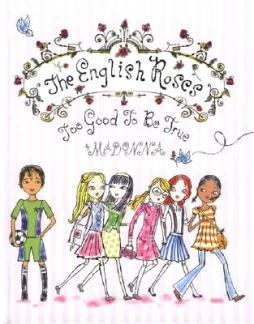

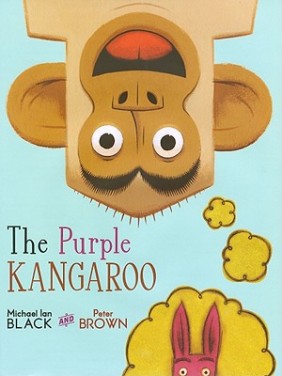
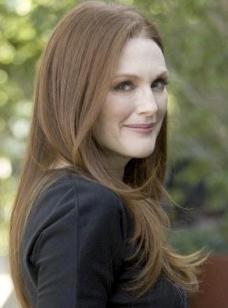
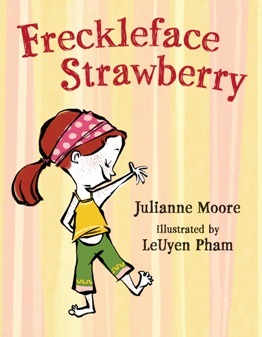
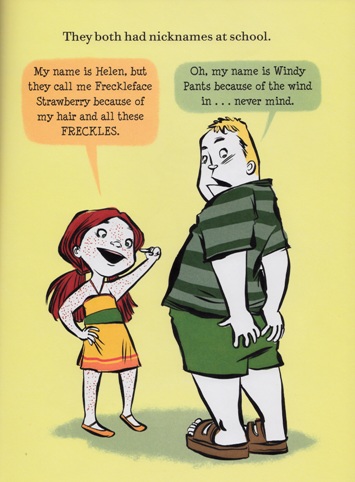
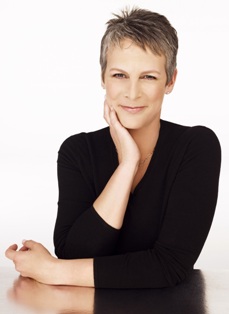
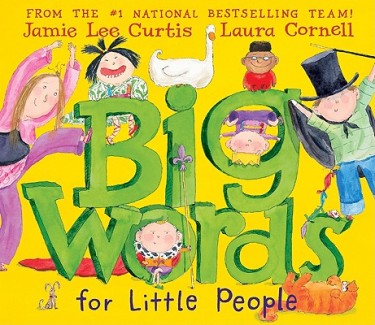
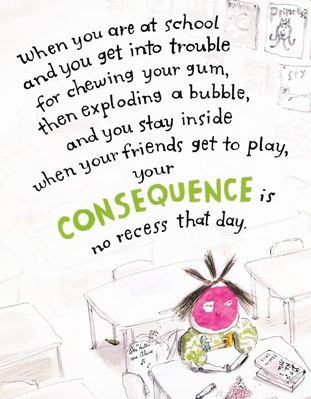
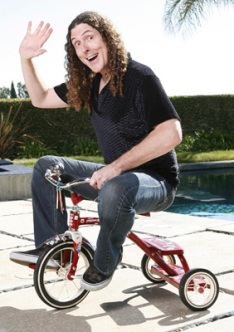
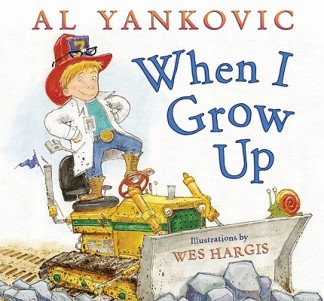
{ 8 comments… read them below or add one }
Thanks for introducing us to Michael Ian Black. We just picked up several of his books up from the library today. I read the Pig Parade one at bedtime tonight and it was so funny! I have high hopes for the other ones!
We have one book by JLC ‘Where Do Balloons Go at Night’ it was just okay and I pulled it a couple of weeks ago to resell. But I’m still checking out a few more of her books – Big Words should be ready to pick up in the next day or so.
We haven’t read “Where Do Balloons Go” and, I’ll admit, JLC’s books do fall on the cheesy side for me occasionally, but when I see how much my daughter loves “Big Words for Little People,” I have to put my reservations aside and say, “OK, I guess that’s a really great book.”
SO much yes to Freckleface Strawberry! I saw Julianne Moore in the subway once and I wanted to stop her and tell her how much I love those books!
Julie Andrews’ “Last of the Really Great Whangdoodles” was a book I read over and over and over again as a child. I haven’t revisited it as an adult, but I would recommend it in a heartbeat.
I would also recommend John Lithgow’s books. Some are just sweet, some are funny, and the Marsupial Sue books are fun to read because it’s fun to say “Marsupial Sue.”
Once kids are reading on their own, I find they enjoy the remarkably appropriate (especially for boys) and amusing books by The Fonz. Henry Winkler has a couple of series, the Hank Zipzer: World’s Greatest Underachiever being the best-known, and I think a couple of stand-alones, though I might be thinking of someone else on the stand-alones. The Hank Zipzer books are great for reluctant readers, since the main character is both accessible and understandable and gets into horrible situations which are often both hilarious and good learning experiences.
Definitely give John Lithgow’s children’s books a try. Great rhymes, terribly fun to read aloud. Check out Micawber and The Remarkable Farkle McBride. Terrific.
My daughter and I like the first English Roses book by Madonna! The illustrations are so pretty and it had a good message about acceptance and friendship. I have not read the rest of the series though and the book she wrote about the man with the apples was not something we liked. I cannot even remember the name.
We love Tell Me a Scary Story… But Not TOO Scary! by Carl Reiner. Awesome Halloween book.
You must log in to post a comment.
{ 2 trackbacks }